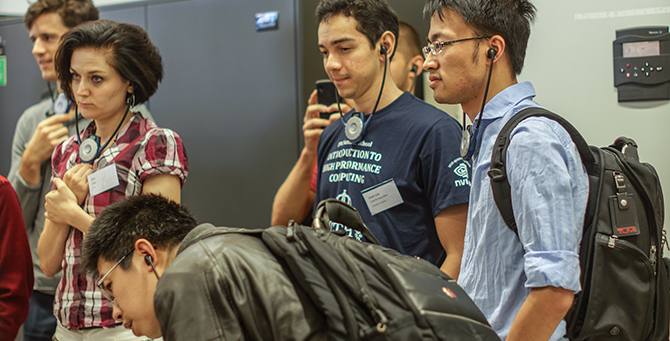PDC Summer School 2016
Apostolos Vasileiadis, CST
This year was the 21st time that the PDC Summer School has been held. A total of 41 researchers attended the school, which was held at the KTH Royal Institute of Technology main campus in Stockholm during the last two weeks of August. For many years we have had wonderful sunny weather during that period. This means that the picnic on the first day – which is a great chance for the participants to meet each other and the staff involved in the course – usually also gives people a chance to work on their suntans while sitting on the grass in the main KTH quadrangle. This year, despite positively hot weather earlier in the summer which dried much of the normally verdant Swedish grass to straw, we had drizzly weather for the first day of the school and only just managed to take a group photo before the rain started.

Many of the participants at the Summer School were “locals” from KTH but there were also attendees from other Swedish universities (Uppsala University, Chalmers University of Technology and Lund University) and from SAAB Electronic Defence Systems. We were also glad to welcome researchers and inventors from further a field who came from Inria (Inventors for the Digital World), France, and from the Institute for Theoretical Physics (IFT) which is based at the Autonomous University of Madrid in partnership with the Spanish Scientific Research Council (UAM-CSIC), Spain.

During this intensive fortnight, the researchers at the Summer School are introduced to the fundamentals of programming supercomputers, and also learn how to improve programs for parallel scientific applications so that they run more effciently. Because the aim is for people to be confident in using high performance computing (HPC) systems by the end of the course, participants do not just attend lectures, but also take part in plenty of practical guided hands-on lab sessions.

There are also tours of the PDC computer hall so that attendees can see Beskow, the fastest academic supercomputer in the Nordic countries, and the other systems at PDC, as well as getting an idea of the complex infrastructure that is required to run such high performance systems continuosly and reliably.
